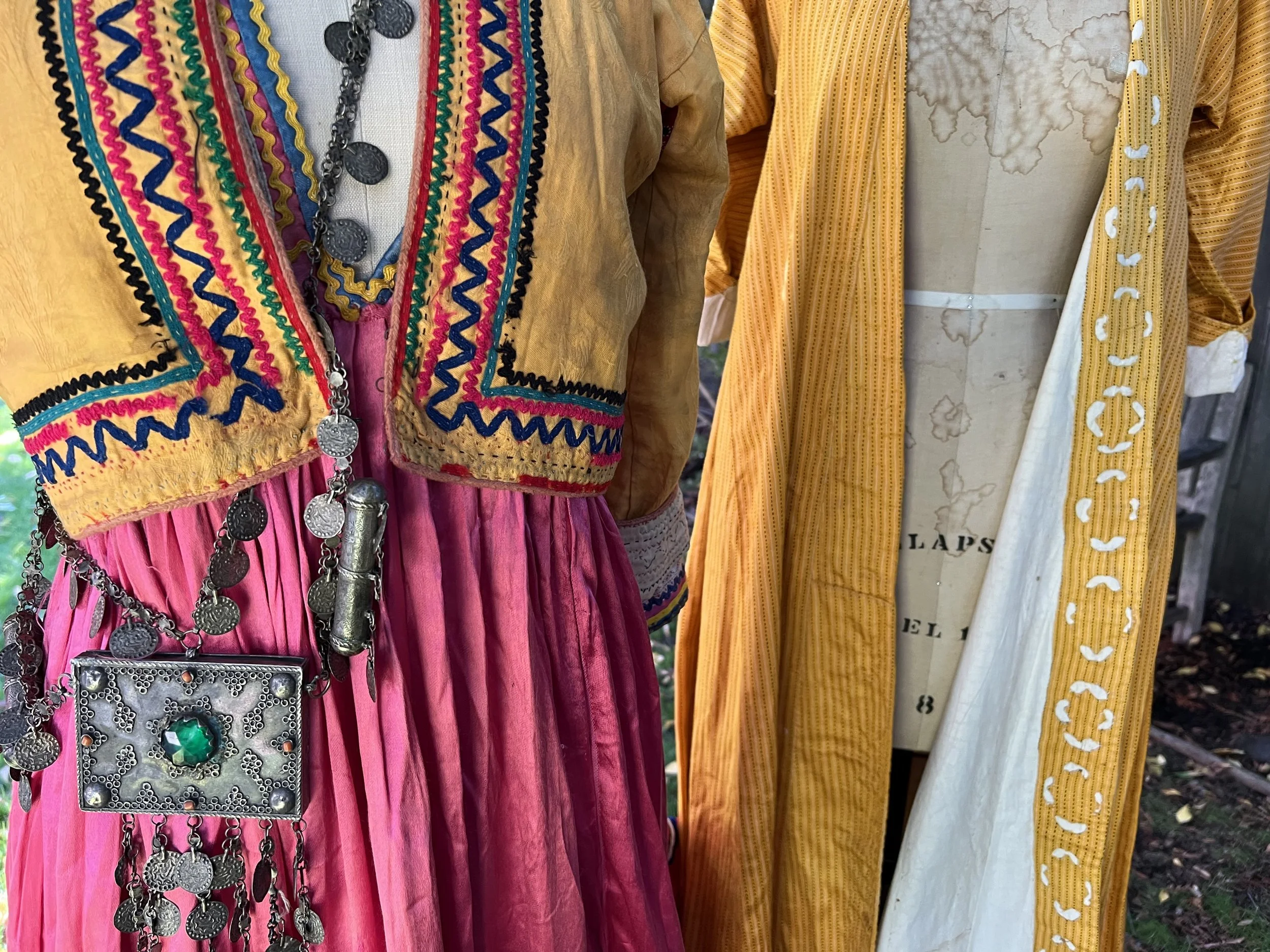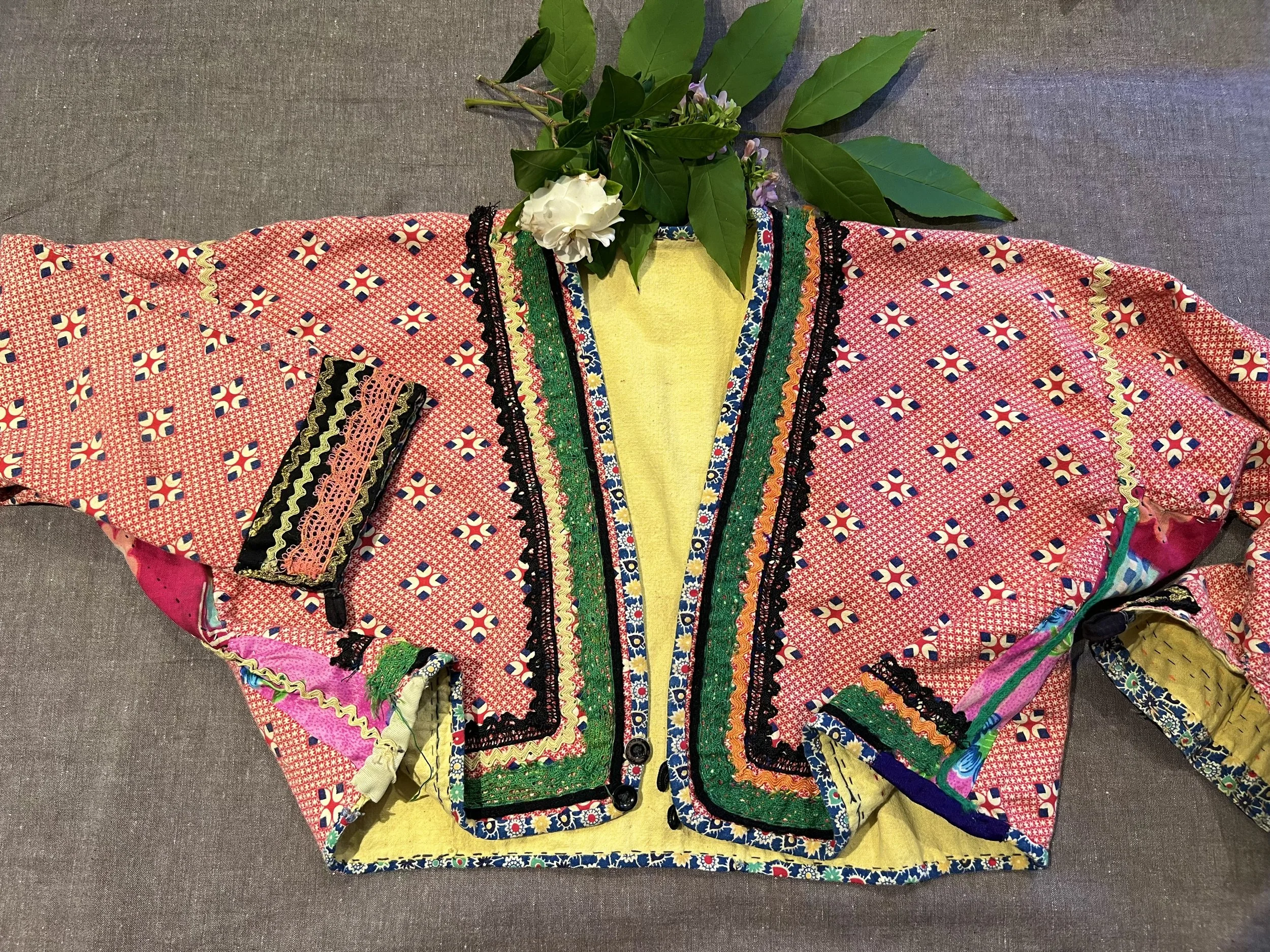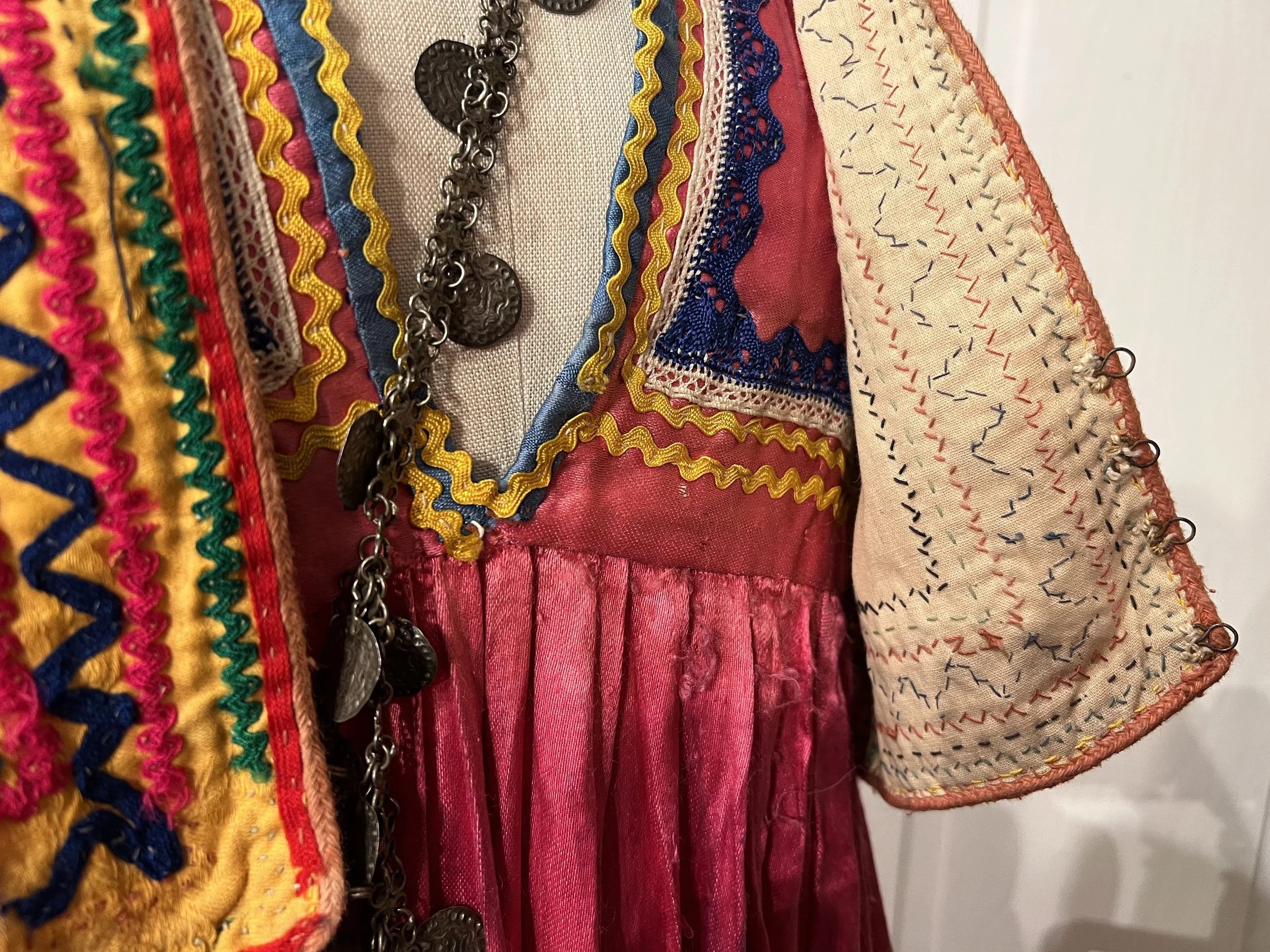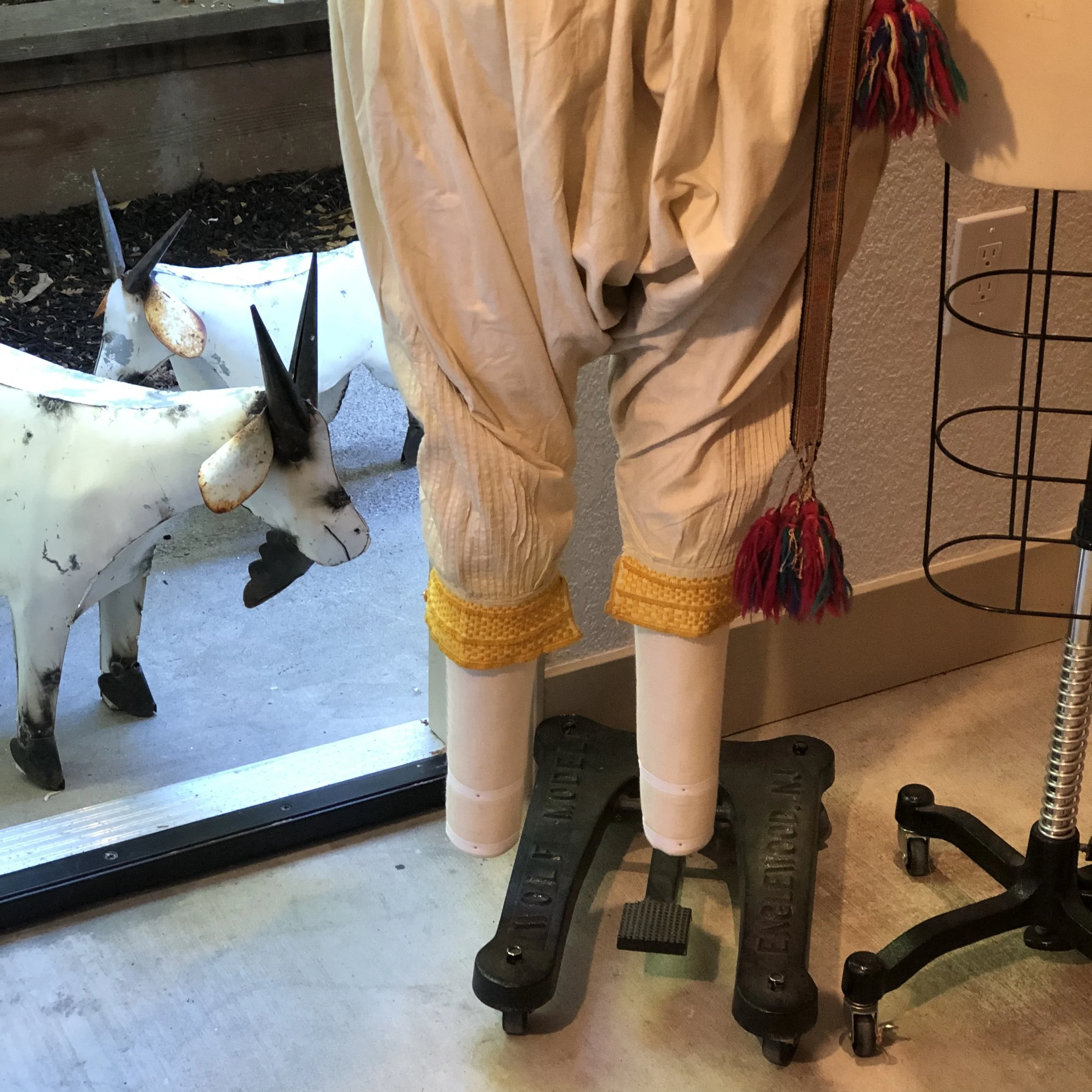الجولان Golan Syria Heritage Dresses Atlac Satin, Jackets and Pantaloons
الجولان Golan Syria Heritage Dresses Atlac Satin, Jackets and Pantaloons
The Syrian Golan with its mixture of Druz, Christians, and Muslims make for a bouquet of lmany styles In dress with attention to color and identity branding.
From its name Golan الجولان-Arabic, meaning a fast passage of earthy land jostled by its own high wind, it’s easy to see how crucial the territory located in the south west corner of Syria, just one hour drive from Damascus this beautiful land was and still continues to be today. It connected Damascus to Jerusalem and to the Euphrates lands البادية simultaneously.
Generally most modern clothing is in the business of helping us hide behind our clothing or project an image of our choice to better fit into any given environment. Identity clothing such as folklore and costumes are about celebrating one’s identity with a splash. An intentional visual display worn on the outside of the body for everyone to see.
The Syrian Golan Heights group of Atlas dresses-فساتين made of cotton backed silk satin (bright and happy silk Fustaan فساتين الجولان are designed with imported British cotton floral linings (1840s), French (1850s) Rickrack ( wavy braid) and rows of machine made commercial lace probably made in Venice, and went by the name تنتنه باللغه التركيه القديمه Tentene, old Turkish language and a description word for lace still in use during the 1970s in Damascus when I was a child.
The Golan Fustaan also resembles the Cypriot Fustani as both are designed with a gathered waistline and deep V shaped neckline and Both use wavy braid!
Aleppo was a hub for weaving, processing, and manufacturing of the Greater Syria silk industry. No doubt it also produced satin-like textiles to fill in the demand for the Atlac satin (Mongol for gold) Textile. Of course the silk was substituted with synthetic Satin later on. Satin the word (comes from the word سلس) Saliss in Arabic, smooth to the touch or a smooth talker.
The textile also went by the name of ZAYTIN as described by the Arab traveler Ibn Battuta in the 1300s and because of this Chinese port located across from Taiwan today and north of the Phillipiens. The textile took on the name Zaitunii زيتوني على اسم الميناء زيتن في المناطق الصينيه تحت سيطرت التتار ( المغول) because the translation overlapped with the geographic port.
Mongolian empire of Genghis khan was located between Russian territories of today ( north) and China to the south. Hence the name Atlac was adopted for the golden smooth to the touch silk in Mongolic.
The second Syrian Golan Heights item is fashioned in a bolero like tight short jacket. Overall design resembles an Armenian or Anatolia even near by Cyprus cut and style.
Research shows-that fitted upper body clothing was introduced into Syria as early as the Umayyad period of Damascus but was not encouraged as the pure Arab fashion was viewed as correct dress.
However with the fast moving spread of the new religion Islam, the Arab and nomadic tribes exposure to so many new cultures and ways of dress, the Abbasid period thought it was best to incorporate (Persian) dress and accept the Polo uniform fashion of greater Khurasan ( fitted sleeves for better movement) adopted by that region and Baghdad alike, as Islam was “not” supposed to differentiate among its new followers.
The third item of the Syrian Golan costume folklore clothing is the pant which is made of Syrian cotton and woven in Aleppo. Again like the pant of Armenia, rows of basket embroidery or chessboard filling stiches flanked with lines of needle lace appear to be the fashionable addition atound the ankles.
Syrian Druz Clothing will be covered in the Sweida video in progress
Golan Christian wedding 💒 procession of 2004 trip to the town of Rimah in progress
————-









